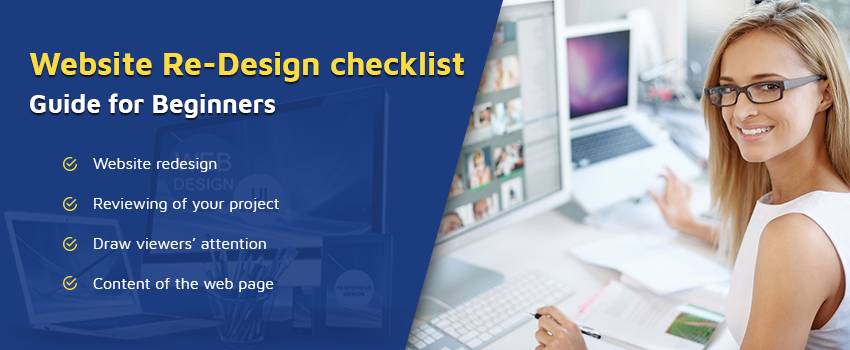Effective Landing Page Design: Elements and Strategies

Overview:
In the digital world, a landing page is a crucial element for online businesses and marketers aiming to drive conversions and capture leads. A landing page is a standalone web page that users land on after clicking on a specific link or advertisement. It serves as a gateway to a website, presenting a focused message and call-to-action (CTA) to encourage visitors to take a desired action, such as making a purchase or filling out a form.
Landing page design plays a pivotal role in determining the success of your online campaigns. An effective landing page design not only captivates users but also optimizes the conversion rate, leading to increased sales and improved business growth. To achieve this, several key factors should be considered.
5 Essential Elements of an Effective Landing Page Design
In today's competitive online landscape, having an effective website design is paramount for businesses looking to capture the attention of their target audience and drive conversions. When it comes to landing pages specifically, there are certain essential elements that can make all the difference in turning visitors into customers. Let's explore these elements and how they contribute to a successful landing page design.
Clear and Concise Messaging: A well-designed landing page should have a clear and concise message that communicates the value proposition of your product or service. Use compelling headlines and subheadings to capture attention and convey the key benefits to the visitors. Avoid clutter and unnecessary distractions to maintain a focused message.
Intuitive Layout: Modern web design principles emphasize simplicity and ease of navigation. Your landing page should have a clean and intuitive layout that guides visitors seamlessly through the page. Use white space effectively to create a sense of clarity and highlight important elements. The placement of content, images, and forms should be strategically arranged to create a logical flow.
Eye-catching Visuals: Incorporating high-quality visuals is crucial for capturing and retaining visitors' attention. Images and videos that are relevant to your product or service can enhance engagement and convey your brand's personality. Use visuals strategically to support your messaging and draw attention to key elements of your landing page.
Compelling Call-to-Action (CTA) Button Designs: The primary goal of a landing page is to encourage visitors to take a specific action. The CTA button should be visually distinct and prominently placed on the page. Use persuasive language on the button, such as "Get Started" or "Claim Your Free Trial," to create a sense of urgency and entice users to click. Test different colors, sizes, and placements to optimize the effectiveness of your CTA button.
Trust Indicators: Building trust is crucial for converting visitors into customers. Incorporate trust indicators such as customer testimonials, reviews, trust seals, or security badges to instill confidence in your brand. Including social proof can alleviate any concerns visitors may have and increase their likelihood of taking the desired action.
Mobile Responsiveness: With the majority of internet users accessing websites through mobile devices, ensuring your landing page is mobile-responsive is vital. Optimize your design to adapt seamlessly across different screen sizes and resolutions. This guarantees a consistent and user-friendly experience for mobile visitors, reducing bounce rates and increasing conversions.
How to Create an Engaging & Compelling Headline for Your Landing Page
When it comes to crafting a powerful landing page, the headline plays a crucial role in capturing the attention of visitors and compelling them to explore further. A well-written headline can make a significant difference in the success of your landing page by piquing interest and enticing users to take the desired action. Here are some effective strategies to create an engaging and compelling headline for your landing page.
Understand Your Target Audience: To create a headline that resonates with your audience, it's essential to understand their needs, desires, and pain points. Conduct thorough research and develop buyer personas to gain insights into their motivations. Tailor your headline to address their specific challenges and provide a solution that captures their interest.
Communicate Unique Value Proposition: Your headline should clearly communicate the unique value proposition of your product or service. Highlight what sets you apart from the competition and emphasize the benefits that users can expect. Use persuasive language that showcases the value and impact your offering can bring to their lives.
Keep it Concise and Clear: A compelling headline should be concise and easy to understand. Avoid using jargon or complex language that might confuse or alienate your audience. Aim for clarity and simplicity, conveying your message in as few words as possible while still being impactful.
Use Action-oriented Language: Incorporate action-oriented language that encourages visitors to take the desired action. Use strong verbs and powerful words that evoke emotion and inspire action. For example, words like "Discover," "Unlock," "Transform," or "Supercharge" can create a sense of excitement and urgency.
Create Curiosity and Intrigue: Engage your audience's curiosity by creating intrigue in your headline. Pose a thought-provoking question or tease a solution that will leave them wanting to know more. By creating a sense of curiosity, you can entice visitors to explore further and engage with your landing page.
Test and Iterate: Crafting an effective headline is not a one-size-fits-all approach. It requires testing and iterating to find the most compelling version. A/B testing different headline variations can help you determine which one resonates best with your audience. Monitor the performance of each headline and make data-driven decisions to optimize engagement and conversion rates.
Top Strategies for Crafting a Winning Copy for Your Landing Page
When it comes to creating a successful landing page, compelling copy is a powerful tool that can engage your audience, build trust, and drive conversions. Crafting an effective copy requires a strategic approach and a deep understanding of your target audience. Here are some top strategies to help you craft a winning copy for your landing page.
Understand Your Audience: Before you start writing, it's crucial to understand the needs, desires, and pain points of your target audience. Conduct thorough research and create buyer personas to gain insights into their motivations. Tailor your copy to address their specific challenges and offer a solution that resonates with them.
Focus on Benefits: Instead of solely listing features, emphasize the benefits your product or service brings to the customers. Clearly communicate how it can solve their problems or improve their lives. Paint a vivid picture of the positive outcomes they can expect, and highlight the unique value your offering provides.
Write with Clarity and Simplicity: Make your copy easy to understand and avoid using complex jargon or technical terms that might confuse your audience. Use concise and straightforward language to deliver your message effectively. Break up your copy into short paragraphs and use subheadings to improve readability.
Use Persuasive Language: Persuasion is key to driving action. Incorporate persuasive language and power words that evoke emotions and create a sense of urgency. For example, words like "discover," "exclusive," "limited time," or "guaranteed" can help persuade your audience to take the desired action.
Highlight Social Proof: Including social proof such as customer testimonials, case studies, or reviews can significantly boost the credibility of your landing page. Showcase positive experiences and results from satisfied customers to build trust and provide evidence of the value your product or service offers.
Craft a Compelling Call-to-Action (CTA): Your CTA is the ultimate goal of your landing page, so it needs to be compelling and action-oriented. Use clear, concise language that leaves no room for ambiguity. Create a sense of urgency by incorporating words like "now," "instantly," or "today."
Test and Refine: Effective copywriting requires continuous testing and refinement. A/B testing different variations of your copy can help you identify what resonates best with your audience. Monitor key metrics such as conversion rates and engagement to make data-driven decisions and optimize your copy accordingly.
Structuring Your Landing Page Layout & Aesthetics to Increase Conversions
When it comes to designing a landing page that drives conversions, the layout and aesthetics of your website play a critical role. A well-structured and visually appealing landing page can captivate visitors, enhance their user experience, and ultimately increase the likelihood of conversions. Here are some tips for structuring your landing page layout and aesthetics to maximize conversions.
Design with User Experience in Mind: Put yourself in the shoes of your visitors and design your website landing page with the best user experience with their needs in mind. Create a clear and intuitive navigation structure that guides users towards the desired action. Make sure key elements, such as the headline, call-to-action (CTA), and important information, are strategically placed and easily accessible.
Embrace Modern Web Design Aesthetics: Incorporate modern web design principles to create an aesthetically pleasing landing page. Use ample white space to provide breathing room for your content and make it easier to read. Choose a visually appealing color scheme that aligns with your brand and evokes the desired emotions in your audience. Employ typography that is easy to read and complements your overall design.
Use Visual Hierarchy: Arrange your content in a way that guides users' attention towards the most important elements. Utilize headings, subheadings, and varying font sizes to create a visual hierarchy. Place key information and the CTA prominently to ensure they stand out and are easily noticed.
Optimize for Mobile Responsiveness: With the increasing use of smartphones, it's crucial to design your landing page with mobile responsiveness in mind. Ensure that your layout adapts seamlessly to different screen sizes and resolutions. Test your landing page on various mobile devices to guarantee a consistent and user-friendly experience for all visitors.
Prioritize Loading Speed: A slow-loading landing page can lead to high bounce rates and lost conversions. Optimize your page's loading speed by compressing images, minifying CSS and JavaScript files, and leveraging browser caching. A fast-loading landing page enhances the user experience and encourages visitors to stay and explore.
Incorporate Trust Signals: Build trust with your audience by incorporating trust signals throughout your landing page. Display customer testimonials, trust badges, security seals, or any other relevant indicators of credibility. These elements can reassure visitors and increase their confidence in taking the desired action.
Conclusion:
In summary, a finely crafted landing page is pivotal for digital triumph. Grasping its purpose and importance is paramount to crafting a potent one. Through delivering a concise message and irresistible call-to-action, a landing page wields the potential to transform visitors into clientele and seize precious leads. For optimal results, partnering with a top-tier UI/UX design service company can elevate your landing page's effectiveness and overall performance, ensuring maximum impact in the digital landscape.











